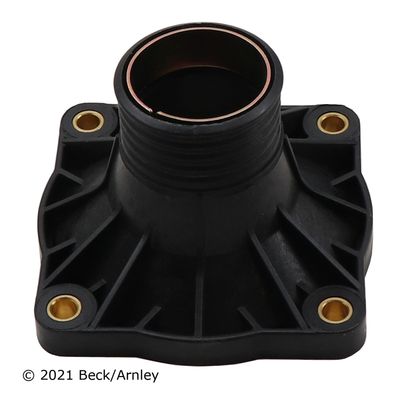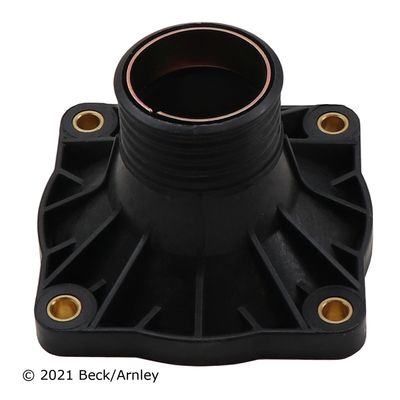Answer
Aug 15, 2024 - 07:56 AM
The thermostat housing is a critical component of your vehicle's cooling system, and several signs may indicate it needs to be replaced. Here’s how you can tell if you might need a new thermostat housing:
1. Coolant Leaks:- Visible Leaks: If you notice coolant leaking from the area where the thermostat housing is located, it could indicate that the housing is cracked, or warped, or the gasket between the housing and the engine block is damaged.
- Puddles Under the Car: Finding coolant puddles under your vehicle, especially near the front of the engine, can be a sign of a leak from the thermostat housing.
- Temperature Gauge: If your engine temperature gauge is consistently reading higher than normal, or if your vehicle is overheating, it could be due to a malfunctioning thermostat that is stuck closed or a housing that isn’t sealing properly, preventing the coolant from circulating effectively.
- Steam from the Hood: Steam coming from under the hood is a serious sign of overheating, potentially caused by a faulty thermostat housing or a leak around it.
- Frequent Refills: If you find that you’re frequently topping off your coolant, even without visible leaks, the thermostat housing could be leaking coolant internally or externally.
- Low Coolant Warning Light: Some vehicles have a warning light on the dashboard that indicates low coolant levels. This could be due to a leak in the thermostat housing.
- Visual Inspection: Upon inspection, if the thermostat housing is visibly cracked, warped, or damaged, it needs to be replaced. Damage can occur due to age, heat cycles, or overtightening of the bolts.
- Corrosion or Rust: If the housing appears corroded or rusty, it might be compromised and could start leaking soon if it hasn’t already.
- Coolant Seepage: Even if the housing itself is intact, the gasket that seals the housing to the engine block can fail, leading to leaks. If the gasket is worn out, brittle, or damaged, it might need replacement along with the housing.
- Stuck Thermostat: Sometimes the issue is with the thermostat itself, but if the housing is old or damaged, replacing it along with the thermostat can prevent future problems.
- Erratic Temperature Fluctuations: If your engine temperature fluctuates unpredictably, it could be due to a faulty thermostat or housing.
- Diagnostic Codes: If your vehicle’s Check Engine Light is on, and the diagnostic trouble codes point to cooling system issues, it could be related to the thermostat or housing.
If you notice any of these signs—coolant leaks, engine overheating, frequent coolant loss, visible damage, or diagnostic trouble codes—it’s a good idea to inspect the thermostat housing. If the housing is damaged, leaking, or corroded, replacing it along with the thermostat and gasket is usually the best course of action to restore proper cooling system function.





Add New Comment